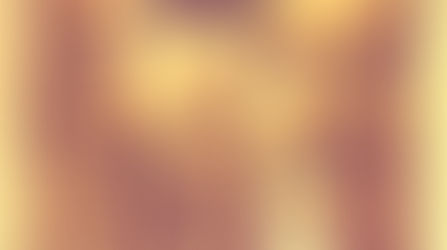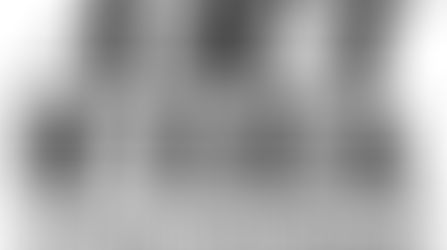Learning the optical stutter | Creating a visual grammar of equality
- Jenn Snider Cruise
- Oct 6, 2013
- 4 min read
Profiling:
Frances Leeming's film Genetic Admiration (2005)
Considering:
The biological-interior
The genetic-imaginary
Reproduction
Visual grammar
Agency
Navigating:
Martin, Emily. "The Egg and the Sperm: How Science Has Constructed a Romance Based on Stereotypical Male-Female Roles." Signs 16.3 (April 1991): 485-501.
Question:
Is there a visual grammar fashioned to challenge institutionalized gender discrimination and normalized (sexist) behaviour that is significant enough (read: powerful enough) tool in reaching toward change?
_______
The 22 minute short animated 'collage cutout' film Genetic Admiration takes us on a pilgrimage into a world where the female body is the 'new frontier' for genetic and procreative science. The work of Canadian performance artist and animator, Frances Leeming, the film was finished in 2005, and won the grand prize at the Toronto Images Festival that year. Jackie Stacey, feminist art historian of cinema and professor of Cultural Studies at The University of Manchester, devoted a chapter to the film in her recent book The Cinematic Life of the Gene, published by Duke University Press in 2010.
In her reading of Leeming’s film, Stacey's analysis is that the work presents a critique and satirization of the ways in which society reveres science (specifically genetic engineering), and how this reverent appreciation is enacted to problematize the already complex topic of agency and the female body. To achieve the free-associative visually and textually satiristic dialogue in the tradition of Dada-collage, Leeming made this work by combining sounds and images from 20th century popular culture, namely Life Magazine. The film is essentially presented in three acts, with the narration provided via the head of Marlene Deitrich as fortuneteller/ psychotherapist (yes, it really is quite stunning). The acts break down as follows:
Act one – using the iconic face of Walt Disney on the body of a pollinating bee, referencing Disney’s own wishes to be cryogenically frozen, represents the fantasy for an influence and power that extends beyond any reasonable desire and into a realm of ‘god-like’ meddling (think 1958’s film, The Fly);
Act two – visiting a test tube sized 'Centre for Genetic Admiration' presents a hysteria and hunger for The Future where the heroic genetic scientists will take us. An imagined space represented as a worlds’-fair complete with obscenely crowded grandstands, scientific-looking doo-dads and a terrible excitement, the Centre is a place where jars of ‘Miracle Whip’ (cleverly alluding to mixtures of egg and sperm) parade around the scene and explode out of the frame in copious reams of cut-out animation while tantalizing tales of procreative miracles are pumped over the Centre's loud speaker.
Act three - journeying inside a pregnant women’s body in reference to the phenomenon of bio-tourism and the hyperreal; where the unseen inner body is given radical scale and spatial dimension for our convenient conceptualization (think of any medical documentary you’ve seen that uses 3D animation to show an otherwise hidden event, such as an artery being slowly clogged), here this inner space of the pregnant body is represented as a Sea World-style aquarium and deep water seascape. Rather than anything intimate and personal, sailboats race on her waters and divers explore all while cheering crowds watch in awe, and a roundtable of white male scientists observe her deepest depths.
In reading the film’s visual grammar of images that include partially nude male and female bodies, photos of Hollywood stars and moguls, iconic imagery of the 1950s Western home and the ‘nuclear family’, we are able to understand that the artist is pointing to the absurdity of the utilization of women’s bodies as tools to the genetic sciences. All Leeming’s visual conjugates and nouns emphasize and exaggerate scale, movement, and colour, as aid to her deconstruction of this perceived authority. She challenges the conventions of stop-motion with disjointed, stiff and stilted action to make her role as animator ‘visible’. Using a free-associative method to imply meaning, she employs symbol and cultural connotation to connect her imagery from the public domain to the private.
Leeming’s film creates a visual analogy about the normalizing of institutional control over the procreative capacities of the female body. Her concluding message is that only by first rising up as individual women against such control can there be a hope of society radically altering its relationship to gender.
The scholar Emily Martin's article "The Egg and the Sperm: How Science Has Constructed a Romance Based on Stereotypical Male-Female Roles" speaks to what Leeming's work gestures toward, how to respond to the construction of a narrative by science that tells a tale of bodies as designed for procreation, and that the woman's body in particular belongs to the body politic:
"Endowing egg and sperm with intentional action, a key aspect of personhood in our culture, lays the foundation for the point of viability being pushed back to the moment of fertilization. This will likely lead to greater acceptance of technological developments and new forms of scru- tiny and manipulation, for the benefit of these inner "persons": court-ordered restrictions on a pregnant woman's activities in order to protect her fetus, fetal surgery, amniocentesis, and rescinding of abortion rights, to name but a few examples" (Martin 500).
Working from a Foucauldian position that sexuality is a social construct reminds us that attention needs to be paid to images of gender, and how they work as a ‘visual grammar’. Learning what these coded images mean, both within and about the larger framework that serves to perpetuate normative representations, is part of how the gender construction can be freed of binary understandings. While the language of objectification through vision is problematic in that it can work to preserve the harmony of the illusions at play in the existing power structures (such as those associated to sex, gender, and medical research), we need to understand the ways in which the cultural content influences the language used in scientific descriptions, and how the forms of articulation change the ways in which biological discoveries unfold in a societal arena. Through this sort of analysis perhaps a non-verbal language of difference could be a means of addressing whether that cultural content is solidly entrenched or easily changed.
Cited:
Stacey, Jackie. “Enacting the Gene: The Animation of Science in Genetic Admiration” from The Cinematic Life of the Gene, 225-56, Durham: Duke University Press, 2010.
























Comments